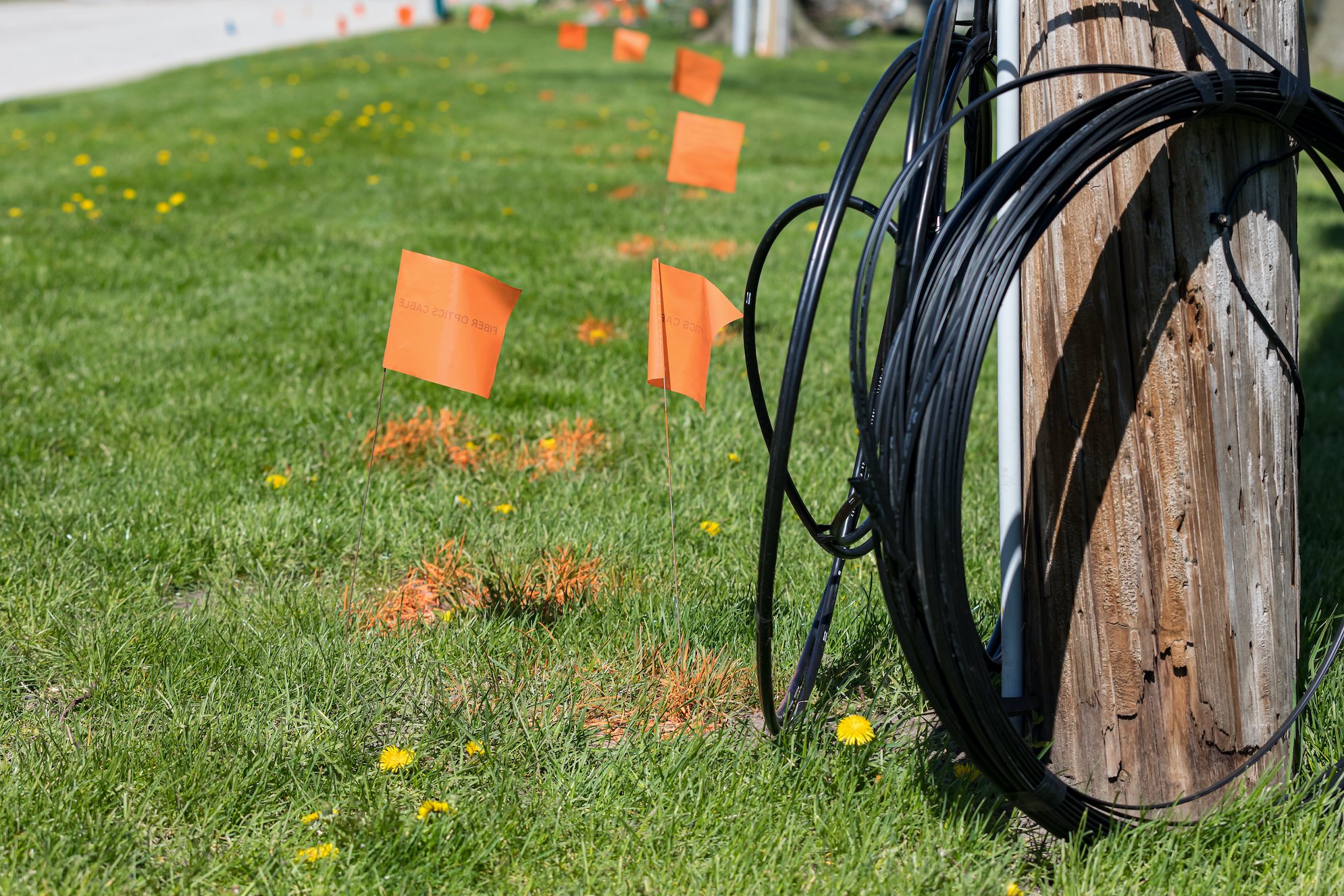Telecom companies are rapidly expanding fiber coverage, particularly to the home. According to the publication telecompetitor, more U.S. homes received broadband service via fiber in 2019 than they did DSL or fiber-to-the-neighborhood (FTTN). And telecom companies are expected to invest $60 billion in fiber-to-the-home (FTTH) initiatives over the next five years, according to telecompetitor.
But, the spread of fiber isn’t without hiccups. According to the Common Ground Alliance’s 2019 DIRT Report, damages to telecommunications facilities make up nearly half (48 percent) of the total known damages to all underground assets. Most telecommunications events (77 percent) are submitted by locators instead of telecom facility owners, indicating the total number of damages could be higher.
Unlike when an excavator strikes a gas or electric line, there isn’t an immediate and obvious threat to public safety from an accidentally cut fiber optic cable. But, fiber cuts can have big consequences for telecom companies down the line. Here, we explore five of those consequences and discuss how damage prevention software can help telecoms anticipate and prevent fiber optic cable damage.
Consequences of fiber optic cable cuts
Service outages
Telecom companies promise their customers fast, reliable service. Fiber optic cable damage hinders their ability to make good on that promise.
Fiber cuts can disable internet or phone service, and rerouting service isn’t always seamless. Service outages caused by fiber cuts to fiber hubs or VIP lines are especially problematic, as they affect a high volume of customers.
Some service outages—like those due to equipment failure—are unavoidable. Fiber cut outages, however, are preventable. Predictive analytics damage prevention solutions use real-world and historical damage data to forecast where fiber optic cable damage is most likely, so telecom companies can implement targeted interventions and stop fiber cuts and service outages before they happen.
Read: An Introduction to Damage Prevention Software
Fiber optic cable damage repair costs
According to the North American Telecommunications Damage Prevention Council, the average cost to bury fiber optic cable in a rural area is $75,000 per mile. Repairing damaged telecom fiber can be just as expensive.
According to the 2019 DIRT Report, the maximum reported cost to repair a damaged telecom facility that year was a whopping $92,000. In 2019, telecom companies paid a median price of $600 million in direct repair costs and $18 billion in indirect costs such as business closures.
Fiber cuts are costing telecom companies big money. Damage prevention software helps telecoms protect their underground assets from excavation accidents. Fewer accidents mean fewer repairs and more money to spend on other initiatives.
Customer loss
The telecommunications industry is highly competitive, and, in a world of seemingly endless promotions to switch providers, customer loyalty can be elusive. If your competitor’s appealing new customer promos don’t persuade your customers to jump ship, unreliable or slow service due to fiber cuts certainly will.
According to Harvard Business Review, it can be anywhere from five to 25 times more expensive to acquire a new customer than to keep an existing one, so customer retention should be among telecom companies’ top priorities. With damage prevention software, telecoms can get ahead of fiber cuts that cause customer churn.
Poor public image
Multiple research studies show that image has an effect on customer acquisition and retention. In general, the better perceived a company is, the easier it is to attract and keep customers. The inverse is also true: The worse a company’s image, the harder it is to get new business and retain existing customers.
Customers who lose service because of fiber cuts often air their complaints online, and media outlets are quick to cover the story. Negative sentiment builds up over time and ultimately affects a telecom company’s bottom line.
Using damage prevention software helps telecom companies prevent outages due to accidentally cut fiber optic cables. Telecom companies with fewer outages don’t receive as much negative press.
Read: 4 Fiber Outages that Show Telecom Damage Prevention is Critical
Penalties and fees
According to Deloitte, 91 percent of people willingly accept a company’s legal terms and conditions without reading them. But, just because people don’t read the fine print doesn’t mean they don’t benefit from it.
Some telecom companies choose to or are required by law to compensate customers when they have outages. The more outages they have, the more credits they owe customers. Even pennies on the dollar add up to a significant sum over time.
Damage prevention software helps telecom companies save money on penalties and fees by reducing fiber cuts that cause outages.
Damages to telecom facilities increased 30 percent from 2018 to 2019, according to the CGA, but this trend does not need to continue. Implementing damage prevention software will help telecom companies reduce fiber cuts and their consequences.
For more on this topic, check out “6 Benefits of Damage Prevention Programs for Telecoms.”

